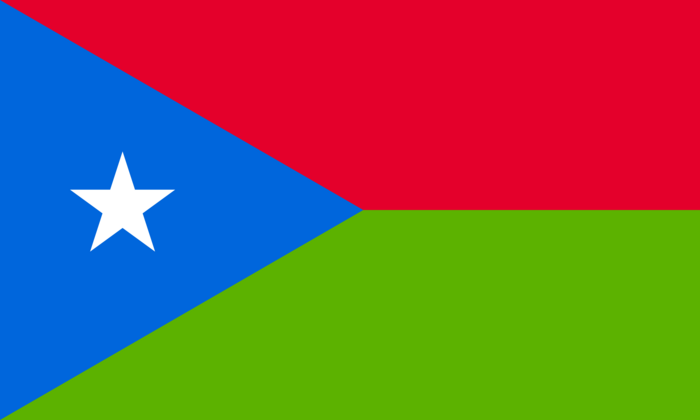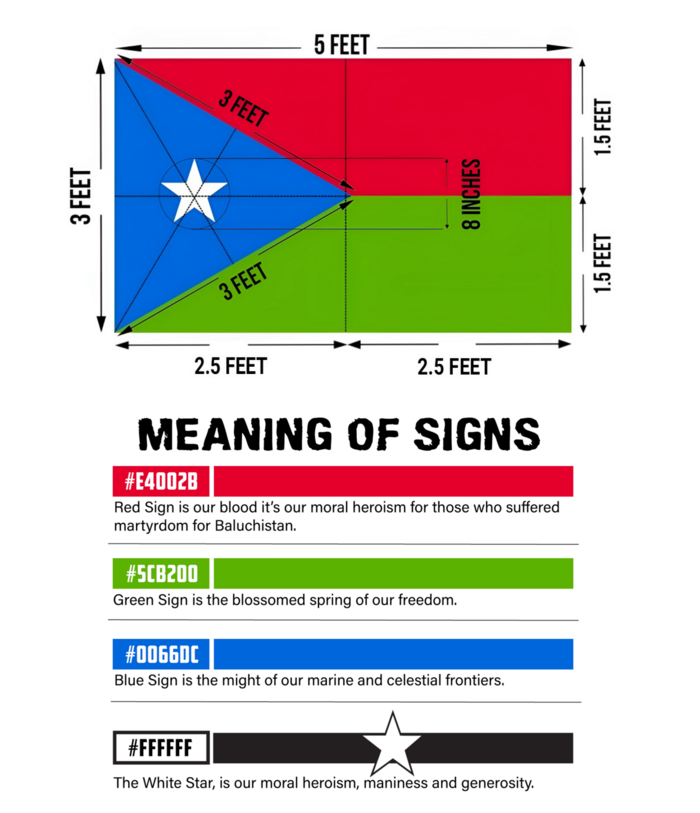the flag of balochistan
A Symbol of the Baloch National Liberation Movement

The Flag of Balochistan (Bairak):
A Symbol of the Baloch National Liberation Movement
Today, the world recognizes approximately 195 independent countries, each represented by its own national flag. However, many nations striving for independence - such as Balochistan, Kurdistan, Western Sahara, Tibet, and Catalonia - have also created their own flags as symbols of identity and resistance. Flags are not exclusive to sovereign states; they also represent international organizations like the United Nations, regional alliances like the European Union, and military coalitions like NATO. In modern times, even corporations use flags as part of their branding.
Among these, the flag of Balochistan, known as (Bairak) in the Balochi and Brahui languages, holds deep historical and political significance. While it gained widespread recognition in the year 2000, some believe it first appeared in the 1960s or 1970s. However, during those early years, its design and colors were not standardized due to the lack of specialized printing equipment in Balochistan and strict state-imposed restrictions on its display. As a result, most flags were either hand-sewn by tailors or crafted at home. These flags were used in private residences and public demonstrations as a silent yet powerful act of defiance.
A turning point for (Bairak) came in 2006, following the martyrdom of Nawab Akbar Khan Bugti at the hands of the Pakistani military. The flag's presence grew significantly, becoming a symbol of resistance. Later, in 2009, after the extrajudicial killings of Shaheed Ghulam Muhammad Baloch, Shaheed Sher Muhammad Baloch, and Shaheed Lala Munir - who were abducted from a lawyer's office in Turbat - the flag began to be displayed openly in markets, schools, and public spaces. In many educational institutions across Balochistan, the Pakistani flag was removed and replaced with Bairak, and instead of the state anthem, students sang the Baloch national anthem (Ma Chukken Balochani).
The Design and Structure of the Balochistan Flag
With advancements in technology, the design of Bairak has been officially documented and standardized. The flag follows a 3:5 aspect ratio, meaning it is 5 feet wide and 3 feet tall. Its structure consists of:
A blue triangle on the left side, with the color code #0066dc, measuring 3 feet on each side.
A white star at the center of the invisible triangle, 8 inches in size, with the color code #ffffff.
A red trapezoid in the upper section, with the color code #e4002b.
A green trapezoid in the lower section, with the color code #5cb200.
This flag has been widely accepted as the official symbol of the Baloch national struggle and is actively used in protests, rallies, and cultural gatherings.
Recognition and Digital Presence
In today’s digital era, Bairak has found a place on social media. The "Flag of Balochistan" Instagram page, with over 21,000 followers, has actively promoted the flag’s significance. So far, no objections have been raised regarding its authenticity or representation, further cementing its status as a recognized symbol of Baloch identity.
The Bairak stands as more than just a piece of fabric; it represents a nation's aspirations, struggles, and unwavering determination for freedom.
